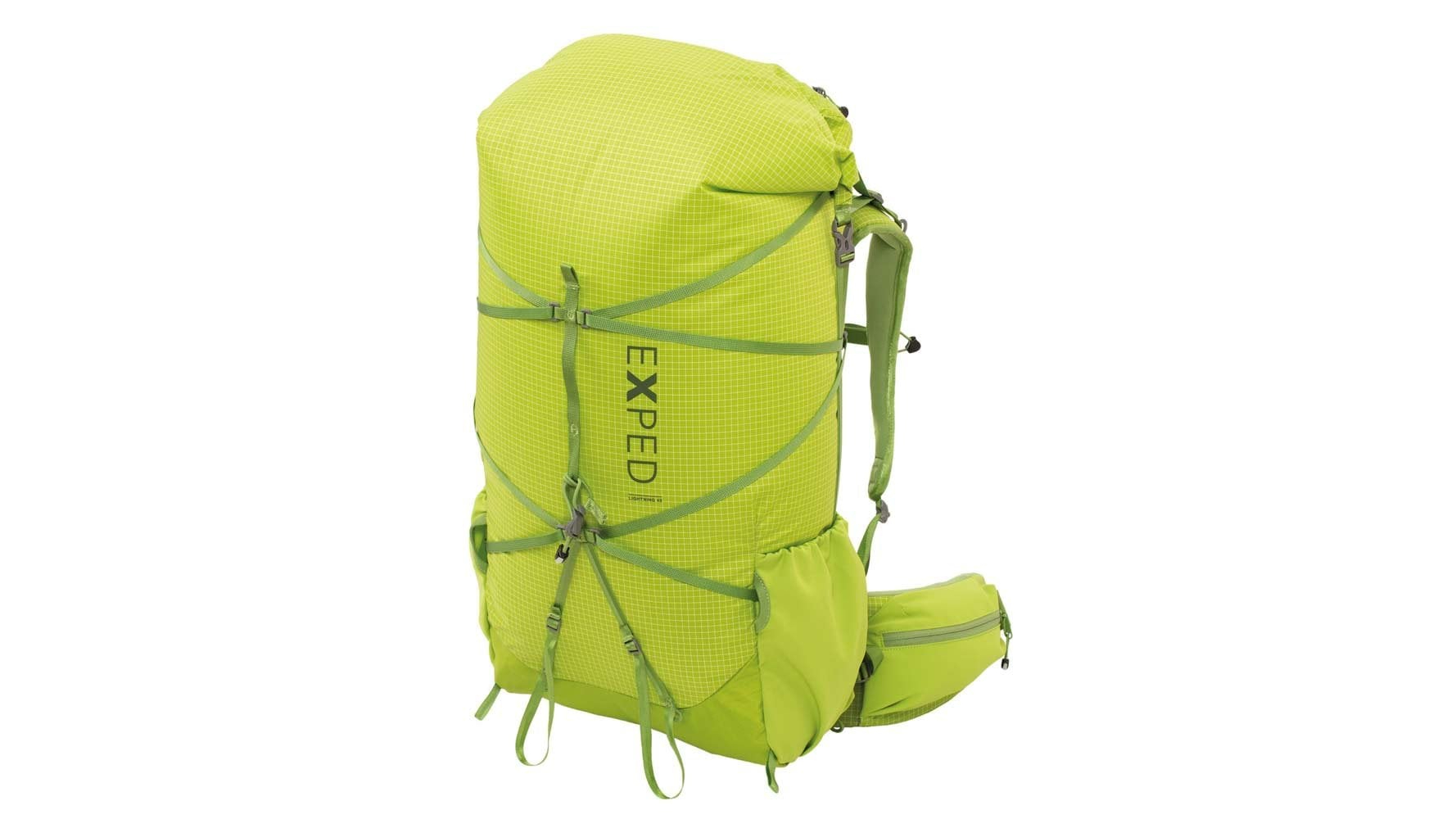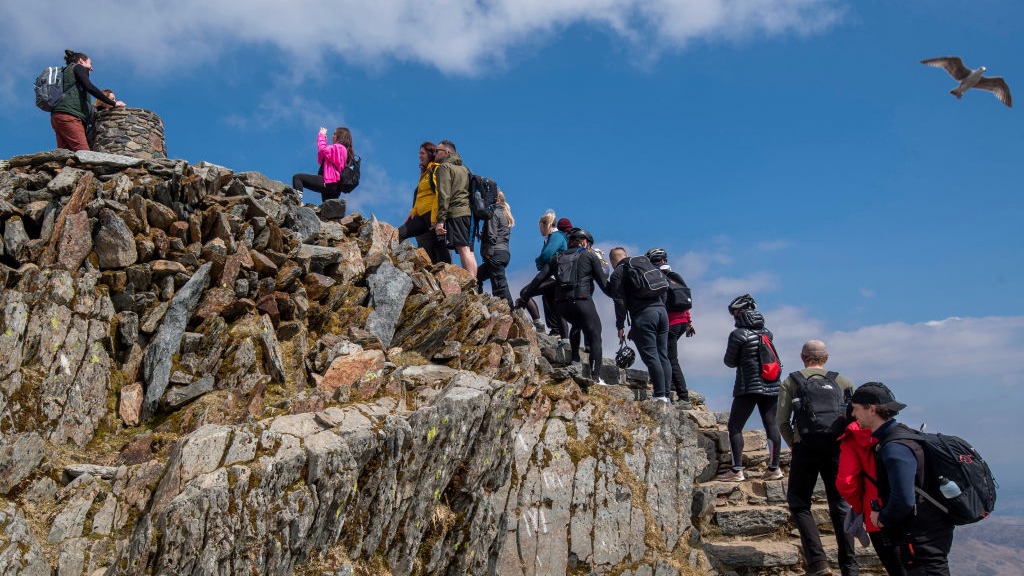Advnture Verdict
The latest version of this tried-and-tested pack retains the ethos of functional minimalism that made it so popular with lightweight backpackers in the first place, while beefing up the pack’s overall durability, load-hauling ability and carrying comfort. With an adjustable torso length and various customisable and removable options too, it is a versatile beast for trips ranging from a few days to a few weeks.
Pros
- +
Lightweight
- +
Stable and comfortable
- +
Well-padded harness and hipbelt
Cons
- -
No lid
- -
No front pocket
- -
Fiddly compression straps
You can trust Advnture
First impressions
The Exped Lightning 45 pack has been a mainstay of the Swiss brand’s product range for nigh on a decade. It’s proven to be extremely popular with lightweight hikers throughout Europe, across the Atlantic and beyond, many of whom were attracted not only by the pack’s unusual looks but also by its design ethos of ‘minimal functionalism’ – arguably, an approach that today encapsulates the spirit of ultralight backpacking.
The latest version is faithful to that original vision. It’s still a very lightweight, top-loading backpack with no lid – instead, there’s a highly weatherproof roll-top closure. There’s no back panel as such either – certainly no rigid, trampoline-style suspended mesh here. Instead, the back system consists of well-padded shoulder straps connected by a one-piece yoke, attached to a similarly well-padded lumbar support and hipbelt via a single extremely robust aluminium stay. There’s no framesheet or foam back panel, leaving room for plenty of airflow to keep your back cool on the trail. After all, nothing is lighter or better ventilated than thin air itself, right?
The top of the pack has an internal horizontal aluminium bar, forming a T-shaped structure from which everything else essentially hangs. When it first appeared, this design was highly innovative. It’s now far more familiar, having been adopted (and adapted) by various other brands. But Exped are endeavouring to stay near the head of the pack in the ultralight field by improving the Lightning in other areas too. The fabrics have been beefed up in terms of both durability and water-resistance (see: Waterproof versus water-resistant). The T-Rex frame is stronger and more supportive, while the lumbar and hip support has also been redesigned for greater carrying comfort.
Elsewhere, in addition to the roomy main compartment there’s a mesh inner pocket for a water reservoir, and a deep outside top pocket with a water-resistant zipper. Stretch side pockets and zipped hipbelt pockets complete the feature set – though there are also numerous compression straps that can be used or removed as preferred to help stabilise and cinch in the load, whether your pack is stuffed to the gills or only half-full (see: What size backpack do I need?). Top and bottom gear loops also enable you to stow more kit on the exterior of the pack as needed. The adaptable design makes this a versatile pack that is well-suited to multiple adventures of many different types and different durations, from a few days to a few weeks.
For more on all of these features, check out our guides on how to choose a backpack and explainer on the various parts of a backpack.
• RRP: $100 (US) /£170 (UK)
• Volume: 45L / 2746 cu in
• Weight: 1164g / 2lb 9oz
• Dimensions (HxWxD): 72 x 32 x 25cm/ 28.3 × 12.6 × 9.8in
• Sizes: One size (adjustable back length)
• Fabric: 210D ripstop nylon, PU coated (1,500mm HH), Oeko-Tex 100 certified with DWR
In the field
It sometimes feels with the Exped Lightning that there are straps almost everywhere. In our view, it’s worth deciding how you’re going to use the pack and adapting it accordingly, which might mean removing some or even all of the exterior webbing. Fortunately, most of the straps are buckled to the main body rather than sewn in, so this is easy to do. The result is a far cleaner and more streamlined-looking pack.
In similar vein, it’s worth taking the time to set up the back system properly. The harness will adjust through a wide range of sizes to suit different torso lengths, although the mechanism takes a little figuring out (it adjusts at the bottom, via a buckle hidden behind the lumbar pad, which detaches via Velcro pads).
With these tweaks made, it becomes a very practical gear-hauler. The minimalist T-shaped frame doesn’t seem like it could support much weight, but that central stay is actually extremely robust, providing plenty of structural integrity even if you load the pack heavily. It also carries well, thanks to the padded harness and hip belt. The lumbar pad feels slightly unusual at first, but we found it soon softened up, and proved very comfortable (far more so than the previous generation of the Lightning that we’d tested).
The lack of back padding improves ventilation greatly too, stopping you from getting too hot and sticky. However, it does mean you need to load the pack carefully to avoid anything digging into your back. That central stay prevents the pack from barreling, but it can bulge a little at either side if you’re not careful to distribute weight evenly.
While the Lightning has a reasonable number of exterior pockets (five in total), only two are accessible with the pack on. The lidless design also requires you to be a bit more organised with your packing – colour-coordinated drybags or similar are a good idea to ensure you can keep track of where your various bits of gear are.
Those caveats aside, we liked the pack and can see why it remains a popular choice, years after it first came to market, and merits its place on our list of the best hiking backpacks. While it is no longer the absolute lightest pack around, few rivals in its weight bracket offer the same load-lugging capability or carrying comfort. It is solid and robust, constructed from tough fabrics and with a highly weatherproof roll-top design.
An outdoors writer and editor, Matt Jones has been testing kit in the field for nearly a decade. Having worked for both the Ramblers and the Scouts, he knows one or two things about walking and camping, and loves all things adventure, particularly long-distance backpacking, wild camping and climbing mountains – especially in Wales. He’s based in Snowdonia and last year thru-hiked the Cambrian Way, which runs for 298 miles from Cardiff to Conwy, with a total ascent of 73,700 feet – that’s nearly 2½ times the height of Everest. Follow Matt on Instagram and Twitter.


